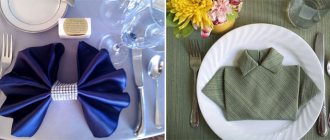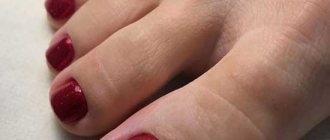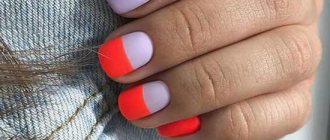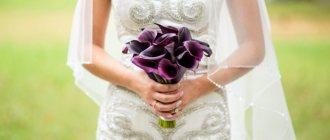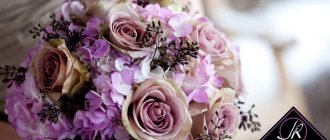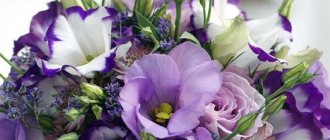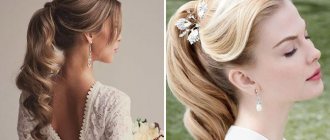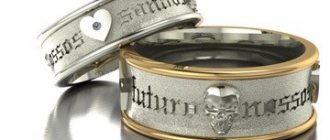Preparation, Articles, Traditions and entertainment December 10 The Bride
The mood of a wedding dinner is made up of details and little things that are not always noticeable at first glance: ironed tablecloths, proper lighting, and stylish printing. In the first part of our article, we have collected for you the main details and rules for a successful wedding table setting.
“
Serving a wedding dinner is not just about dishes, textiles, furniture and decor, it is also about the atmosphere! Therefore, be sure to take care of music, lighting and surprise compliments that will not leave even the most biased guests indifferent.
”
Color palette and lighting
When the choice of style is over, it’s time to decide on the overall color scheme of the wedding decor and details, as well as the color palette of the table setting. It is important to choose shades and their saturation, to “distribute” the colors of the wedding palette between various serving details: decide what color the tablecloth will be, central compositions, dishes, printing. At a wedding dinner, colors can sparkle with new colors: if the purple that you like so much in the ceremony area is too bright for serving, then you can safely replace it with a lighter shade. Almost every color has a light, pastel version. The main rule in choosing a color palette: only pastel shades can be combined with each other in any way. But it is better not to use the brighter, primary colors of the color wheel in large quantities. When adding a gray tint, any color changes saturation. Remember that in your table setting only one bright color will look good, but if there are more saturated colors, then the overall picture will be difficult to perceive.
Before you build a color scheme for your table setting, please note that the properties of the color change depending on which shades you combine it with. Next, decide on the number of colors. Usually 1, 2 or 3 colors are used as the main ones. It is best to combine in a proportion of 70/30, if there are two of them (one main and one additional), or in a proportion of 60/30/10, if there are three (main color, additional and accent). Multi-colored mixes also look good, but you need to carefully create a palette for them so that not a single color stands out. In this case, you will not have a primary color - they are all equal.
Light also plays an important role in serving. The biggest enemy of any table setting is a colored spotlight. You can spend hours choosing shades of pink for a tablecloth, looking for color combinations in a floral arrangement, and then the room will be flooded with bright purple light. In this case, it is better to choose light classic colors as the main serving colors: white, cream, ivory. Pay attention to evening lighting when serving: add accents with candles, light bulbs, and other light sources. If possible, place such sources above the table so as not to distort the perception of colors in the evening, but to illuminate them evenly.
Selecting a tablecloth
The tablecloth is the most important element of the wedding table, since it creates the main background and mood, from which the designer will later base himself when selecting napkins, decorations and other accessories for the wedding. Traditionally, white tablecloths are used at weddings because they look the most aesthetically pleasing and festive.
There are lace tablecloths, and sometimes embroidery is used as a decorative element. As a rule, the wedding tablecloth is very long and falls almost to the floor. This adds elegance and luxury to the overall design. If you are not a supporter of everything traditional, you can choose bright table settings, for example, pink, lilac or purple tones.
Peach color looks beautiful when serving, as well as delicate shades of blue and light blue. You can read more about color combinations on the website Svadebka.ws.
Textile
Any table setting begins with textiles: tablecloths, napkins, runners - they form its basis. First of all, any textile must be ironed and steamed! All folds and folds are visible in the photo, so don’t forget to keep an eye on this on the wedding day, and remind the manager about this detail in advance. When choosing textiles, you need to decide on the concept of single-layer or multi-layer fabric. The single-layer principle says: when there is only one tablecloth on the table and there is no additional decor, then it should be either a neutral color or the main color from the palette, since in the eyes of the beholder it takes up most of the composition. The most interesting look are colored tablecloths made from unusual materials: supplex, knitwear with sparkles or sequins, knitted fabric, etc. The principle of multi-layering is that a runner made of fabric or other alternative materials is laid on top of the tablecloth. The width of the track can be very different: from 40 cm to the entire width of the table. This principle also works when there is no tablecloth on the table, and the runner is laid on top of the tabletop, which is a replacement for the first layer of textiles.
Please note that, according to the rules for serving, the table runner should hang 30 cm from the table, or go straight down to the floor. The combination of different types of textiles on the table should look harmonious. For example, brightly colored napkins go well with a neutral tablecloth, but in this case the materials must match. If the runner or tablecloth has a pattern, then the napkins can be one of the colors of the pattern on the main fabric. Textiles can be the same color, but different in texture, for example, the tablecloth is shiny, and the napkins are matte.
Devices
Etiquette teaches you how to set the table not only beautifully, but also as conveniently as possible for eating. Therefore, all appliances are arranged according to the principle: what is needed first is located further from the plates. The soup spoon is placed on the right at some distance from the plate. A snack knife, a special knife for fish and a knife for the main course are placed in front of the spoon with the blade on the plate. The place for forks is to the left of the plates. They are laid out with their teeth facing up according to the same principle as knives. The dessert spoon and fork should be placed above the plate.
Do not clutter the table with cutlery. It should be served only with those that will definitely be useful during the meal. For example, if fish is not served at the wedding, a fish knife will be clearly unnecessary.
Dishes
What guests pay the most attention to is the dishes. Pay attention to the dishes when choosing a venue for the celebration: they should be free of chips and made of good materials (ceramics, porcelain, clay). If the style is specific, then the dishes should look appropriate in that style. If you see that the cutlery and glasses are absolutely not suitable, select dishes specifically for the wedding dinner - the perfect picture is worth the extra hassle! The principle of layering in dishes always wins. Two or three plates always look more interesting and advantageous than one universal one. Plates can be different not only in color, style, but also in material. For example, glass and ceramics, dense plastic and clay.
A placeholder plate or base will add a highlight to any table setting. This is a plate that is used solely for appearance, but is not used for eating. You can also use other decorative elements as a backing: saw cuts, wicker napkins. If it is not possible to use several plates, then it is better to choose a main plate with a pattern or color. For beautiful and proper serving, there must be at least 3 utensils on the table: fork, knife and spoon. In rare cases, the fork + knife option would also look appropriate. But then you can’t do without additional decor. Glasses for each guest should be prepared for different types of drinks. Be sure to make sure before the start of the evening that the glasses are wiped and there are no traces of the waiters’ hands on them - for this, as a rule, waiters serve with gloves.
Necessary cutlery and dishes for setting the table for a wedding
If you are going to celebrate a wedding in a cafe or restaurant, then you do not need to worry about setting the table, everything will be done there by professionals. But if you are going to celebrate a celebration at home, you will need not only the knowledge and skill of serving, but also the necessary dishes and cutlery.
Editor's choice: Blueberry wedding: identity in berry style, photo review
Serving utensils are divided into two types:
- individual use - this includes forks, knives, tablespoons and teaspoons;
- general use - spoons for pouring liquid dishes, spatulas for cakes and pizza, tongs for sweets or side dishes.
As for the dishes, this will depend on the menu that is prepared for the banquet, as well as on the place where the celebration will take place. Usually porcelain, glass, ceramics and other types of dishes are used. But in rare cases, disposable tableware is also used for each guest - if the wedding is away, it is celebrated outdoors.
Hot dishes can also be served in metal containers.
The most common types of dishes that are usually placed on the wedding table are plates for cold appetizers, pie plates, special deep soup bowls with a lid, and salad bowls. Snacks that consist of pieces (cheese, meat, fish) can be served in oval dishes. I usually serve spices on boats. Carafes are provided for drinks.
And don't forget about the napkin holders. Even if each guest is given napkins separately, there must be paper napkins on the table.
Editor's choice: Wedding ceremonies, tips and ideas with photos
Individually for each guest they place a plate or two (one more, the other less), glasses, glasses for alcohol, glasses for water and the necessary cutlery.
The same exact set is provided for newlyweds. But things like a knife and a cake spatula, and glasses are usually decorated, so don’t rush to share common cutlery with them. Spoons, knives and forks can also be beautifully tied with a ribbon or bow.
Setting a table for a wedding is a very responsible task that requires knowledge, skill and a sense of beauty. It is better, of course, to leave this matter to professionals. But if you decide to set the table with your own hands, then you need to study all the subtleties and rules of table setting in accordance with generally accepted traditions.
It also doesn’t hurt to have a little imagination to make the table beautiful and appetizing.
Central composition
Several factors play a key role when choosing compositions for guests’ tables: style, seating arrangement and table shape. If the tables are round, then the compositions should be located in the center to emphasize the shape. On long tables, use the principle of single compositions: it is better to create either one garland or a long composition, or several standard compositions, but along the entire length of the table. The composition on any table should be below 40 cm or above 70 cm, so that guests can see each other, and not flowers and vases, and can communicate freely. Compositions in the style of “garden floristry” are increasingly coming into fashion, that is, not round and regular, but disheveled, free, with protruding twigs, flowers and greenery, as if they were just picked in the garden and put in a hastily vase.
Instead of standard floristry, you can use completely different materials, but remember that they must be combined with the background and textiles. For example, branches or driftwood and moss will look more appropriate on a tree. Candles or fruits in the composition look better on textiles, especially if the candles are antique and elegant. Don’t forget the most basic principle of wedding service: it should be for the guests. This is a kind of sign that you were waiting for them and wanted to make the dinner special, so the central composition should be visible from each guest’s seat and cannot be covered with plates of food or, even worse, bottles.
Napkins
Decorating wedding tables is unthinkable without stylish, elegant napkins that create an atmosphere of comfort and homely warmth. It is believed that it is the napkins that determine the taste of the hostess of the holiday. So, this serving detail simply must be perfect! There are no rules here. Trust your imagination and try to find your own version.
When choosing napkins for your wedding table, you can play with the sizes, but it's best to stick to a square shape. They can be arranged in an original way using special fasteners and decorated with a small flower or a sprig of greenery. The color palette should match the decorations. This way you will get a beautiful bright accent that will fit perfectly into the decor.

